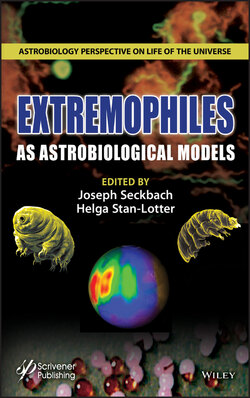Читать книгу EXTREMOPHILES as Astrobiological Models - Группа авторов - Страница 34
2.1 Introduction
ОглавлениеAlthough Darwin’s observation of samples from an Argentinian salt pond led him to predict the existence of life associated with diverse extreme environments [2.26], almost two hundred years had to pass before extremophiles gained serious scientific consideration. At the beginning of the XXth century the interest in preventing the spoiling of salt-preserved codfish by halophilic microorganisms, with its damaging economic and social consequences, led to a need to understand how these microorganisms overcome the osmotic pressure created by the saturated salt preservation conditions. Unfortunately, the interest in halophiles decreased after an effective solution for fish preservation using salt from continental mines that contained fewer viable halophilic organisms, was put into practice. In the forties, the interest in extremophiles re-emerged after the discovery that the massive oxidation of metal components in metal mining activities was mainly due to the metabolic activity of chemolithoautotrophic microorganisms that obtained energy from reduced mineral sources, and was not the result of chemical oxidation promoted by the atmospheric oxygen, as had been sustained for a long period of time [2.23]. Extremophile studies grew as a result of increased biotechnological interest in thermophiles based on the application of the Arrhenius equation [2.107]. Finally, the discovery of a new domain of life, Archaea, by Carl R. Woese (originally named Archaebacteria), in which many known extremophiles were included (halophiles, thermophiles, acidophiles, strict anaerobes), led to the explosion of microbial ecology’s search for new extremophilic champions, in an attempt to establish the limits of life [2.108] [2.109].
The systematic exploration of extreme environments has led to the discovery of habitats that had been considered uninhabitable only a few years ago. As a consequence, interest in extreme environments has grown exponentially not only to answer fundamental questions about the mechanisms used by extremophiles to grow in different extreme environments but to explore their biotechnological potential (e.g., biomining, catalysis, energy generation, bioremediation, etc.).
The exploration of extreme environments has also played an important role in the development of Astrobiology. As specified in the NASA Astrobiology roadmap (https://astrobiology.nasa.gov/research/astrobiology-at-nasa/astrobiology-strategy) and the European AstRoMap (http://astromap.esf.org/astromap-roadmap.html) one of the main goals of this transdisciplinary area of research is to characterize extreme environments, the microorganisms developing in them and the mechanisms used to cope with the extreme conditions of the environment, to estimate the possible existence of life outside of planet Earth. The experiments performed by the Viking mission (https://www.nasa.gov/mission_pages/viking), the first astrobiological mission aimed at searching for signs of life on Mars, determined that there was little chance that life could have developed on its surface given the extreme conditions detected there [2.76]. In the last fifty years important advances in microbiology have confronted this rather negative vision. Thanks to the exploration of extreme habitats here on Earth we now know that life is extremely robust and can adapt to a wide range of extreme conditions, thus raising the probability of finding life on other planetary bodies.
In this chapter we will review our current knowledge of Rio Tinto as an acidic geomicrobiological model system and address its astrobiological implications. The main interest of acidophiles is that unlike the rest of the extremophiles, which are simple adaptations to different geophysical constrains (radiation, pressure, temperature, ionic strength, water activity, chaotropicity, etc.), the chemolithotrophic metabolisms of these microorganisms generate the extreme acidic conditions of pH and the associated high concentration of heavy metals in which they dwell.
